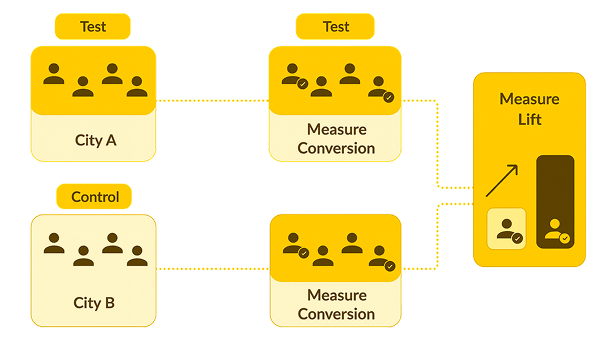
Academy Hub
Matched Market Testing (MMT) uses a robust statistical framework to measure the true causal impact of marketing campaigns. By pairing markets based on historical performance and creating a synthetic control group, we can isolate the effect of a marketing intervention from natural market fluctuations
STAY UP TO DATE
Explore our Resources
Matched Market Testing (MMT), also known as geo-testing, is a causal inference technique used to measure the incremental lift of a marketing campaign. We divide a set of geographic markets (e.g., DMAs, states) into two groups:
Test Markets: A group of markets where we apply a specific marketing treatment (e.g., increased ad spend, a new channel, or withheld spend).
Control Markets: A group of similar markets where we do not apply the treatment.
By comparing the performance of the test markets to the control markets during the campaign period, we can determine the marketing intervention’s causal effect, or lift.

Unlike platform attribution, which often overstates performance, MMT provides true incrementality measurement. This controlled experimental approach ensures you understand what revenue and conversions are actually driven by your marketing investments versus what would have happened naturally.

Check out our Case Studies
Chapter 1: Understanding MMT Test Types and When to Use Them

Chapter 2: MMT Investment Require ments and Budget Planning

Chapter 3: Reading and Acting on MMT Results

Chapter 4: MMT Limitations and Alternative Approaches

Chapter 5: Market Selection and Synthetic Control Methods

Chapter 6: Platform-Specific MMT Implementation

Chapter 7: Test Duration and Statistical Rigor

Chapter 8: Integrating MMT with Media Mix Modeling








